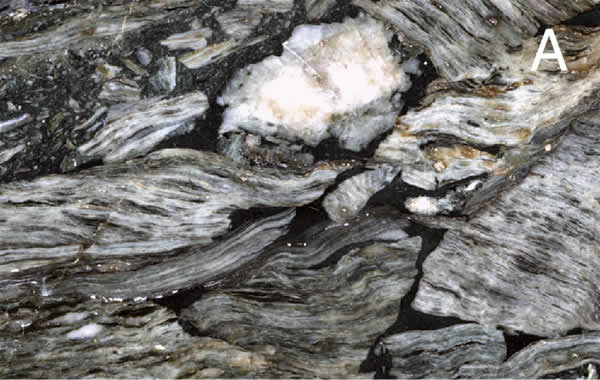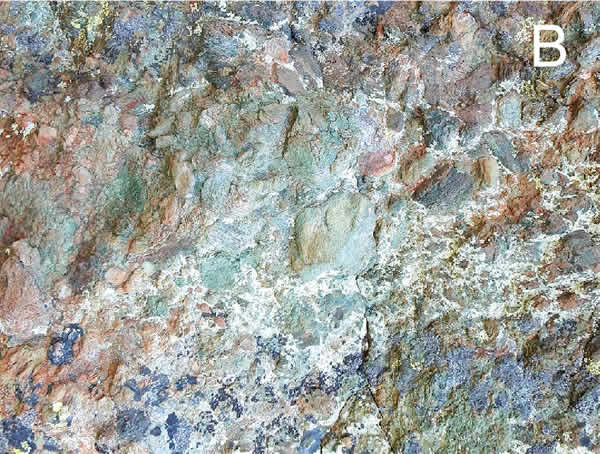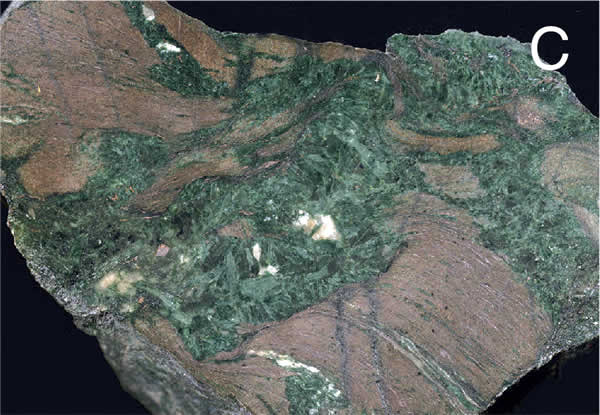


Figure 5.
Examples of brecciation and fault-related melting of subduction-zone metamorphic rocks (the photographs in [A] and [C] are from Samuel Angiboust, personal commun., 2017; the photograph in [B] is from Michele Locatelli, personal commun., 2017). (A) Pseudotachylite (result of fault-related frictional heating) from the Arosa Zone St. Moritz (Switzerland) exposure of ~35 km depths of an ancient subduction zone interface investigated by Bachmann et al. (2009). The horizontal dimension is 5 cm. In this photograph, we see the result of plastic deformation (clasts are mylonitized) and evidence of melt injection during the seismic event. (B) Eclogite-facies breccia from the Monviso ultra-high pressure (UHP) metamorphic locality (Italy) representing a major rupture event at ~80 km depth in an ancient subduction zone (the horizontal dimension is ~1.0 m; see Angiboust et al., 2012a). (C) Another example of intensely fractured/brecciated eclogite-facies metabasaltic rock from the UHP metamorphic Monviso locality, showing the mineralization of these fractures by omphacite, a Na-rich pyroxene stable at extremely high pressure-temperature (P/T) conditions (the horizontal dimension is 15 cm). The mineralized matrix of the breccia in (B), and the veins in (C), reflect high-P/T element mobility, likely in H2O-rich metamorphic fluids.